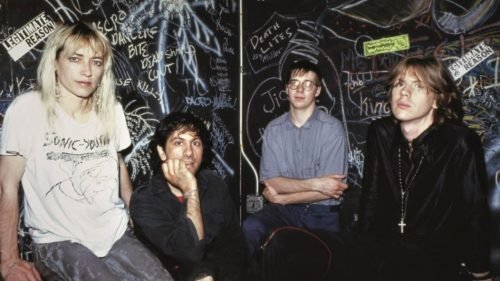In the pantheon of alternative rock, few bands have wielded as much influence as Sonic Youth. Emerging from the chaotic cauldron of New York City’s 1980s underground scene, they carved out a niche that was both intensely experimental and profoundly impactful. Their music, characterized by unconventional guitar tunings, feedback, and dissonance, redefined the boundaries of what rock music could be. Sonic Youth’s relentless pursuit of sonic innovation and their collaborations with visual artists have cemented their status as avant-garde icons, bridging the gap between music and art in ways few others have achieved.
Sonic Youth’s artistic journey is deeply intertwined with the avant-garde movements of Fluxus and Dada. These movements, known for their radical approach to art and their challenge to the status quo, found a kindred spirit in Sonic Youth. The band’s use of noise and dissonance was not merely a stylistic choice but a deliberate tactic to subvert conventional musical structures and critique the rampant consumerism of contemporary culture. By embracing the chaotic and the unorthodox, Sonic Youth echoed the rebellious spirit of Fluxus and Dada, creating a body of work that is as intellectually provocative as it is sonically groundbreaking.
Sonic Youth: A Brief History
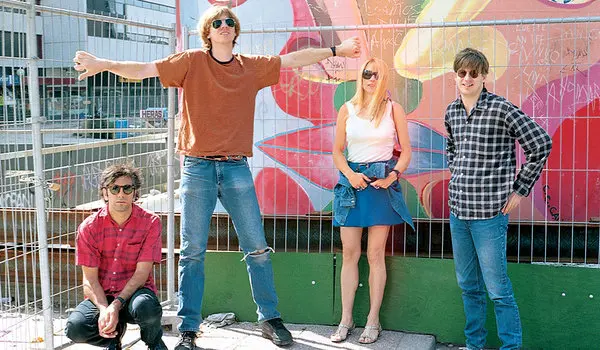
Formation and Evolution
Sonic Youth was formed in 1981 in New York City, a time when the city’s music scene was teeming with the raw energy of punk and the burgeoning experimental ethos of no wave. The founding members—Thurston Moore (guitar and vocals), Kim Gordon (bass, guitar, and vocals), and Lee Ranaldo (guitar and vocals)—were later joined by a series of drummers, the most long-standing being Steve Shelley, who solidified the lineup in 1985. The band’s inception was rooted in the members’ shared desire to push the boundaries of rock music, drawing inspiration from the avant-garde art and music scenes that surrounded them.
Throughout the 1980s and 1990s, Sonic Youth evolved from underground darlings to influential figures in the alternative rock movement. Their early albums, such as Confusion Is Sex (1983) and Bad Moon Rising (1985), laid the groundwork for their distinctive sound, while Daydream Nation (1988) and Goo (1990) brought them critical acclaim and a wider audience. The band continued to innovate and release groundbreaking music until their disbandment in 2011, following the dissolution of Gordon and Moore’s marriage.
Musical Style
Sonic Youth’s sound is a distinctive amalgamation of punk’s raw energy and the experimental ethos of the avant-garde. They are renowned for their use of alternate guitar tunings, creating a unique sonic palette that diverges from traditional rock structures. Feedback, dissonance, and noise play crucial roles in their compositions, often transforming their music into a textured, immersive experience. Their approach to songcraft eschews conventional melodies and harmonies, instead favoring a more abstract and atmospheric soundscape. This bold experimentation set them apart in the punk and alternative rock scenes, where their peers often adhered more closely to conventional song structures and production techniques.
Influences
Sonic Youth’s influences are as eclectic as their music. The band members were deeply inspired by the punk rock ethos of bands like The Stooges and The Ramones, which provided a foundation for their raw, unfiltered energy. However, their musical direction was significantly shaped by the avant-garde and experimental movements. The no wave scene, characterized by its rejection of commercial new wave music, had a profound impact on Sonic Youth’s early work, with bands like Glenn Branca’s ensemble influencing their use of dissonance and unconventional tunings.
Furthermore, the minimalist compositions of composers like John Cage and Steve Reich, with their emphasis on unconventional sounds and structures, found a place in Sonic Youth’s musical experimentation. The influence of these avant-garde figures is evident in the band’s willingness to explore and incorporate noise as a fundamental element of their music, challenging traditional notions of harmony and melody. This blend of punk’s rebellious spirit and avant-garde experimentation allowed Sonic Youth to carve out a unique niche in the music world, making them one of the most innovative and influential bands of their time.
The Avant-Garde Art Movements: Fluxus and Dada
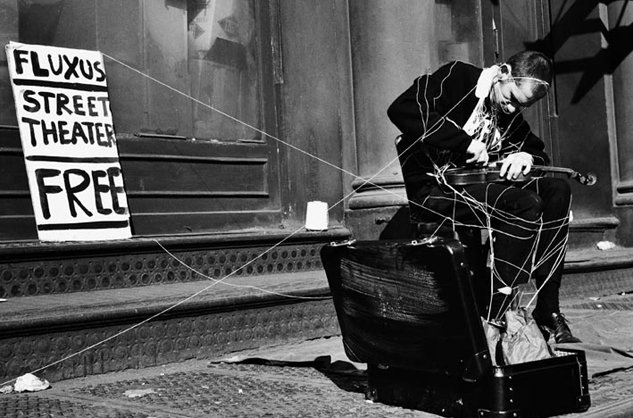
Introduction to Fluxus
Fluxus was an international and interdisciplinary avant-garde movement that emerged in the early 1960s, founded by Lithuanian-American artist George Maciunas. It sought to blur the boundaries between art and life, encouraging artists to engage in simple, everyday actions as art. Fluxus was characterized by its emphasis on process over product, its playful and often humorous approach, and its commitment to anti-commercialism. Fluxus artists, including Yoko Ono, Nam June Paik, and John Cage, created performances, events, and “happenings” that challenged traditional notions of art, often involving audience participation and unconventional materials. The core principles of Fluxus emphasized the democratization of art, making it accessible and participatory, and often critiqued the commercialization and elitism of the art world.
Introduction to Dada
Dada was an avant-garde art movement that began in Zurich, Switzerland, in 1916, as a reaction to the horrors of World War I. Founded by artists like Tristan Tzara, Hugo Ball, and Marcel Duchamp, Dada rejected the logic, reason, and aestheticism of modern capitalist society, instead embracing chaos, irrationality, and absurdity. The movement sought to undermine traditional art forms and conventions, using satire, nonsense, and anarchy as tools for social and political critique.
Dada artists created works that defied categorization, including collages, assemblages, and ready-mades—ordinary objects presented as art. The movement’s core principles centered around anti-art, the rejection of bourgeois cultural and intellectual values, and the desire to shock and provoke audiences into reevaluating their perceptions of art and reality.
Common Themes
Fluxus and Dada, though emerging in different contexts and eras, share several common themes that reflect their radical and rebellious nature:
- Anti-Art: Both movements vehemently opposed the traditional definitions and boundaries of art. Dada’s ready-mades, such as Duchamp’s iconic Fountain, challenged the very notion of what could be considered art. Similarly, Fluxus sought to dissolve the distinction between art and everyday life, encouraging the idea that mundane activities could be artistic expressions.
- Absurdity and Humor: Absurdity was a central theme in both movements, used to subvert conventional logic and critique societal norms. Dada embraced nonsense and illogical juxtapositions to undermine rationality, while Fluxus employed playful humor and whimsical performances to engage and surprise audiences. This use of absurdity served as a powerful tool for challenging the status quo and provoking thought.
- Rebellion Against Traditional Art Forms: Both movements were marked by their rejection of established art forms and institutions. Dada’s anarchic approach sought to dismantle the pretensions of high art, while Fluxus’s interdisciplinary and participatory nature broke down the barriers between different artistic disciplines and between artist and audience.
- Critique of Consumerism and Commercialism: Fluxus, in particular, was critical of the commercialization of art, advocating for a more democratic and accessible approach. This critique resonated with the anti-capitalist sentiments of Dada, which arose in response to the mechanized brutality of World War I and the capitalist systems that perpetuated it. Both movements sought to challenge the commodification of art and promote a more egalitarian and inclusive artistic practice.
The Intersection of Music and Art: Sonic Youth’s Avant-Garde Inspirations
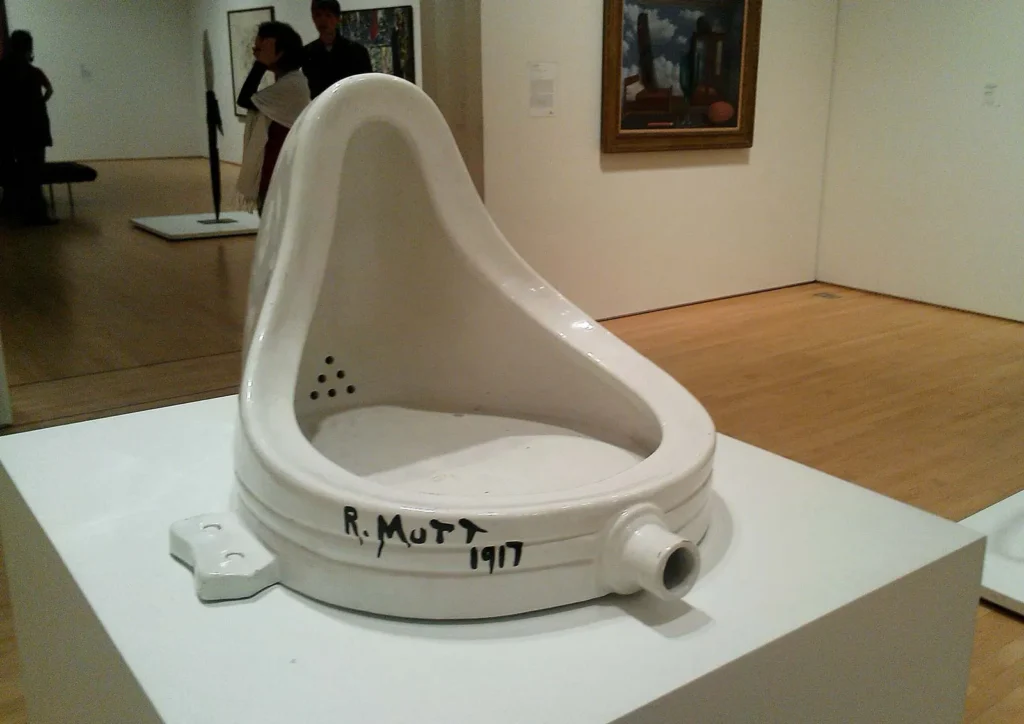
Fluxus Influence
Sonic Youth’s approach to music was profoundly shaped by the principles of Fluxus, a movement that championed experimental art and the blurring of boundaries between different artistic disciplines. Fluxus artists emphasized the process of creation over the final product, an ethos that Sonic Youth embraced wholeheartedly. This is evident in their willingness to experiment with unconventional sounds, structures, and methods of production.
Fluxus’s impact on Sonic Youth is particularly noticeable in their use of noise and unconventional guitar tunings. Much like Fluxus artists who used everyday objects in their art, Sonic Youth manipulated guitars with drumsticks, screwdrivers, and other items to create unique sounds. This experimental approach is reminiscent of John Cage’s prepared piano pieces, where everyday objects altered the instrument’s timbre, highlighting the influence of Fluxus’s challenge to traditional art forms. Sonic Youth’s live performances, often featuring extended improvisations and spontaneous noise sections, also reflect Fluxus’s emphasis on the unpredictability and immediacy of art-making.
Dada Influence
Dada’s focus on absurdity, anti-commercialism, and the rejection of conventional aesthetics found a powerful resonance in Sonic Youth’s work. The band’s lyrics and visual imagery often incorporated elements of absurdity and surrealism, drawing directly from the Dada playbook. Dada’s use of satire and nonsensical elements to critique society can be seen in Sonic Youth’s often cryptic and abstract lyrics, which challenge listeners to question and interpret the underlying messages.
Anti-commercialism, a core tenet of Dada, is also a prominent theme in Sonic Youth’s career. The band consistently resisted mainstream commercial pressures, choosing to maintain artistic integrity over pursuing mass-market appeal. This is exemplified by their signing with major label Geffen Records under the condition that they retain full creative control, an unusual and risky move at the time. Their album Goo (1990) includes the song “Tunic (Song for Karen),” a poignant critique of the commodification of artists, echoing Dada’s disdain for the commercialization of art.
Artistic Collaborations
Sonic Youth’s connections with the avant-garde art world were not limited to abstract influences; they engaged directly with artists who were part of or inspired by Fluxus and Dada. One of their most notable collaborations was with visual artist Mike Kelley, whose work often explored themes of pop culture, repressed memory, and the grotesque. Kelley designed the cover for their 1992 album Dirty, which features a photograph of a dirty stuffed animal, embodying both absurdity and a critique of consumerism.
Another significant collaboration was with Raymond Pettibon, known for his association with the punk rock scene and his provocative, Dada-esque illustrations. Pettibon created the cover art for Sonic Youth’s 1990 album Goo, which has since become an iconic image in alternative culture. The stark, comic-style drawing captures a sense of subversive humor and rebellion, aligning perfectly with the band’s ethos.
Additionally, Sonic Youth worked with filmmaker Richard Kern, whose avant-garde films were marked by their raw, unfiltered portrayal of subcultural life. Kern directed several of the band’s music videos, infusing them with a gritty, experimental aesthetic that mirrored their musical innovations.
Noise and Dissonance: Breaking Musical Boundaries
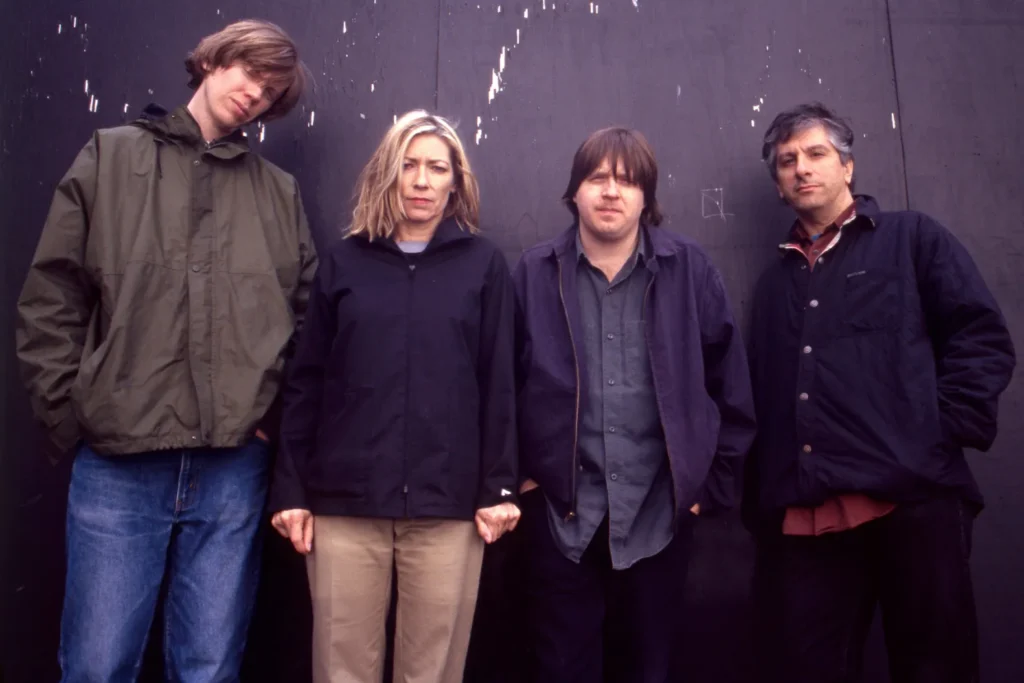
Definition and Use
In the context of music, noise refers to sounds that are traditionally considered unwanted or disruptive, often characterized by a lack of conventional harmony or melody. Dissonance, on the other hand, involves the use of intervals or chords that create a sense of tension and instability, as opposed to the pleasing and resolved sound of consonance. While noise and dissonance are often viewed negatively in classical music theory, avant-garde and experimental musicians have embraced these elements as powerful tools for expression, pushing the boundaries of what music can be.
For Sonic Youth, noise and dissonance were not merely stylistic choices but integral components of their artistic vision. They used these elements to create immersive soundscapes that challenged listeners’ expectations and redefined the parameters of rock music. By incorporating noise and dissonance, Sonic Youth sought to evoke emotions and reactions that traditional melodies and harmonies could not achieve, emphasizing the raw, unfiltered energy of their music.
Techniques and Tools
Sonic Youth employed a variety of techniques to incorporate noise and dissonance into their music, many of which were unconventional and innovative:
- Alternate Tunings: One of the band’s signature techniques was the use of alternate guitar tunings. By deviating from standard tuning, they created unique tonalities and chord structures that were rich in dissonance and complexity. This allowed them to explore new sonic territories and produce sounds that were both jarring and captivating.
- Unconventional Guitar Techniques: Sonic Youth often used objects such as drumsticks, screwdrivers, and files to manipulate their guitar strings, producing a wide array of noises and percussive sounds. These techniques, inspired by avant-garde practices, added layers of texture and unpredictability to their music.
- Feedback and Amplifier Noise: Embracing the raw power of feedback, Sonic Youth utilized the screeching, howling sounds produced by their amplifiers as an integral part of their compositions. This approach added an element of chaos and intensity, reinforcing the band’s experimental ethos.
- Effects Pedals: The band made extensive use of effects pedals to modify and distort their sound. Delay, reverb, and distortion pedals were used to create swirling, atmospheric soundscapes that enhanced the sense of dissonance and noise.
Examples in Songs
Sonic Youth’s innovative use of noise and dissonance can be heard throughout their discography. Here are a few key examples:
- “Silver Rocket” from Daydream Nation (1988): This track epitomizes the band’s use of noise and dissonance. The song features a middle section where the conventional structure breaks down into a chaotic blend of feedback, distorted guitar noise, and dissonant riffs. This passage exemplifies how Sonic Youth used noise as a central element of their musical expression.
- “Schizophrenia” from Sister (1987): The song opens with a jangly, dissonant riff created using alternate tunings, immediately setting a tone of tension and unpredictability. The interplay between the guitars throughout the track demonstrates the band’s ability to weave dissonance into their melodies, creating a compelling and dynamic sound.
- “The Diamond Sea” from Washing Machine (1995): This epic, nearly 20-minute track showcases Sonic Youth’s mastery of extended noise jams. The song evolves from a melodic, structured beginning into a sprawling soundscape of feedback, drone, and dissonance, highlighting the band’s skill in using noise to create an immersive auditory experience.
- “Expressway to Yr Skull” from EVOL (1986): Often referred to as a defining track in Sonic Youth’s career, this song features a slow-building crescendo of noise and feedback, culminating in a powerful, dissonant climax. The use of alternate tunings and unconventional guitar techniques is particularly prominent, illustrating the band’s innovative approach to music-making.
By incorporating noise and dissonance into their music, Sonic Youth not only challenged conventional musical boundaries but also created a distinctive sound that has influenced countless artists across various genres. Their fearless experimentation and commitment to pushing the limits of rock music continue to resonate in the avant-garde and alternative music scenes today.
Challenging Conventional Musical Structures
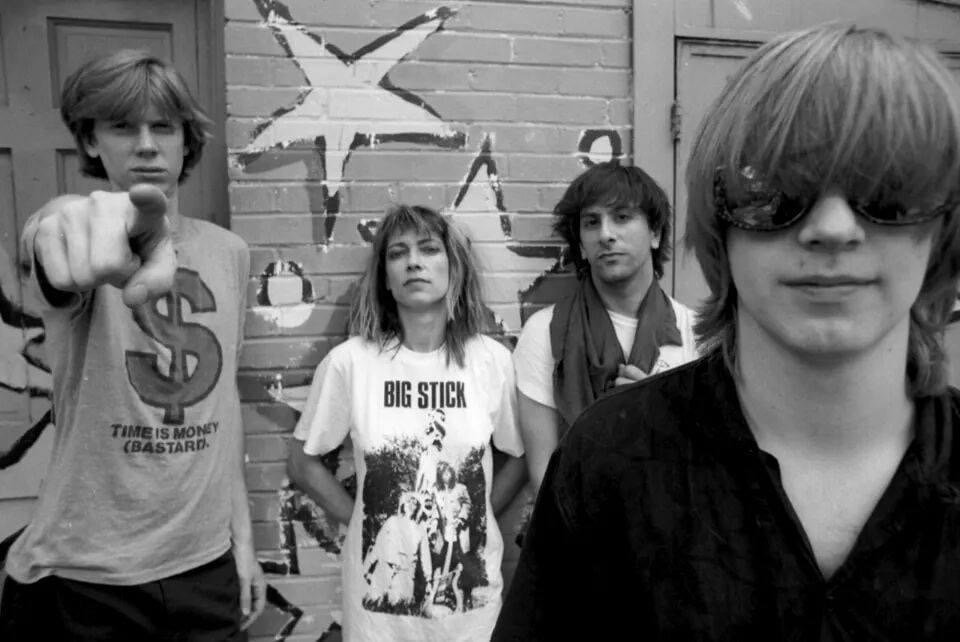
Breaking Norms
Sonic Youth was renowned for their relentless pursuit of musical innovation, defying traditional song structures and harmonies that defined mainstream rock music. Instead of adhering to the verse-chorus-verse format, their songs often took a more freeform approach, incorporating extended instrumental sections, unconventional rhythms, and abrupt changes in dynamics and tempo. This disregard for conventional structures allowed them to explore a vast array of sonic landscapes, creating music that was unpredictable and immersive.
One of their hallmark techniques was the use of alternate guitar tunings, which not only created unique tonalities but also disrupted traditional harmonic progressions. Their compositions frequently featured dissonant chords and atonal melodies, eschewing the harmonious and melodic conventions of popular music. By integrating elements of noise and feedback into their music, Sonic Youth further challenged listeners’ expectations, crafting soundscapes that were as abrasive as they were captivating.
Comparison to Traditional Rock
To understand Sonic Youth’s avant-garde approach, it’s essential to contrast their music with mainstream rock and pop. Traditional rock music typically relies on a standardized song structure, with clear verses, choruses, and bridges, all adhering to a familiar harmonic framework. Melodies are often catchy and accessible, designed to appeal to a broad audience. The production is polished, with a focus on clarity and balance to ensure commercial viability.
Sonic Youth’s music, on the other hand, was a stark departure from these norms. Their songs often lacked a clear, repetitive structure, favoring a more organic and evolving form. The use of unconventional guitar tunings resulted in chord progressions that were unfamiliar and complex, creating a sense of disorientation for the listener. The inclusion of noise, feedback, and dissonance introduced an element of chaos, contrasting sharply with the clean, controlled sound of mainstream rock. This experimental approach set them apart from their contemporaries, aligning them more closely with the avant-garde art movements that inspired them.
Impact on the Music Industry
Sonic Youth’s pioneering efforts had a profound impact on the music industry, influencing a wide range of artists and genres. By breaking free from traditional musical structures, they opened the door for other musicians to experiment and push the boundaries of their own work. Their success demonstrated that there was an audience for music that defied conventional expectations, encouraging record labels to take risks on more avant-garde and experimental acts.
One of the most significant impacts of Sonic Youth’s approach was their role in the rise of the alternative rock movement in the late 1980s and early 1990s. Bands like Nirvana, Pavement, and Dinosaur Jr. cited Sonic Youth as a major influence, adopting their ethos of experimentation and nonconformity. Nirvana’s Kurt Cobain, in particular, was heavily influenced by Sonic Youth’s use of noise and alternate tunings, which can be heard in the raw, unpolished sound of Nevermind and In Utero.
Moreover, Sonic Youth’s signing with Geffen Records in 1990 under the condition of retaining creative control set a precedent for other alternative bands. This move challenged the music industry’s standard practices, proving that artists could maintain their integrity and still achieve commercial success. Their insistence on creative freedom inspired a new generation of musicians to prioritize artistic expression over commercial pressures.
Sonic Youth also played a crucial role in promoting and collaborating with other avant-garde and underground artists. Their own record label, SYR, released experimental works and provided a platform for lesser-known artists to reach a broader audience. This commitment to nurturing the avant-garde community further solidified their legacy as pioneers who reshaped the musical landscape.
Critique of Consumerism
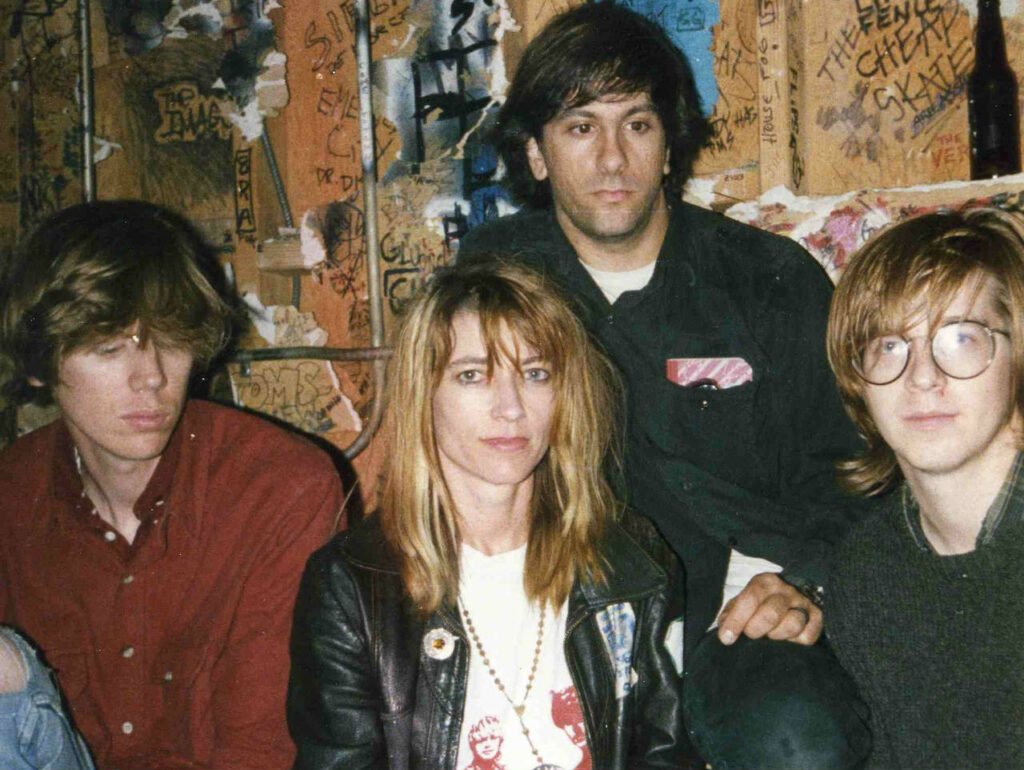
Lyrical Themes
Sonic Youth’s critique of consumer culture and materialism is woven throughout their lyrics, often reflecting a deep-seated disdain for the superficiality and commodification prevalent in modern society. One prominent example is the song “Swimsuit Issue” from the album Dirty (1992). The lyrics, which reference the sexualization and objectification prevalent in media and advertising, highlight the band’s criticism of how consumer culture exploits and dehumanizes individuals, particularly women.
In “Youth Against Fascism” from the same album, the band takes a direct stance against not only political oppression but also the complicity of consumer culture in sustaining systems of power and inequality. The song’s aggressive lyrics and tone underscore their frustration with a society driven by consumerist values at the expense of social justice and individual freedom.
Another notable example is “Plastic Sun” from Murray Street (2002). The lyrics critique the artificiality and vacuousness of consumerism, symbolized by the “plastic sun,” a metaphor for the hollow promises of material wealth and consumer goods. Through these and other songs, Sonic Youth articulates a powerful critique of a culture obsessed with consumption and the relentless pursuit of profit.
Album Artwork and Imagery
Sonic Youth’s visual aesthetic often aligns with their anti-consumerist themes, using album artwork and imagery to reinforce their critique of materialism. The cover of Goo (1990), illustrated by artist Raymond Pettibon, features a stark, black-and-white drawing of two young people in a car, accompanied by the ominous caption, “I stole my sister’s boyfriend. It was all whirlwind, heat, and flash. Within a week we killed my parents and hit the road.” This provocative image challenges the sanitized, glamorous portrayals commonly found in commercial media, instead presenting a raw and unsettling narrative that questions societal norms.
The album Dirty features cover art by Mike Kelley, depicting a stuffed animal covered in dirt. This image juxtaposes the innocence of childhood with the grime and corruption of adult consumerism, symbolizing the loss of purity and the pervasive influence of materialism. The use of such striking and unconventional imagery reflects Sonic Youth’s commitment to challenging the visual and ideological conventions of mainstream culture.
Additionally, the band’s use of minimalist and often abstract designs on their albums, such as the blurry, distorted images on Murray Street, serves to distance their work from the polished, commercial aesthetic of mainstream music. This visual approach reinforces their message of rejecting consumerist values and embracing a more authentic, unvarnished artistic expression.
Public Statements and Actions
Sonic Youth has not only embedded their critique of consumerism in their music and visuals but also in their public statements and actions. Throughout their career, the band members have been vocal about their disdain for the commodification of art and the pressures of the commercial music industry.
One notable example is their decision to sign with Geffen Records in 1990 under the explicit condition that they retain full creative control over their work. This move was a direct challenge to the prevailing industry practice of compromising artistic integrity for commercial success. By insisting on creative freedom, Sonic Youth set a precedent for other artists to prioritize their artistic vision over market demands.
Furthermore, Sonic Youth’s involvement in various political and social causes reflects their commitment to challenging consumerist values. They have participated in benefit concerts and events supporting organizations like Rock for Choice, which advocates for reproductive rights, and have used their platform to raise awareness about issues such as environmental conservation and anti-globalization.
Legacy and Influence
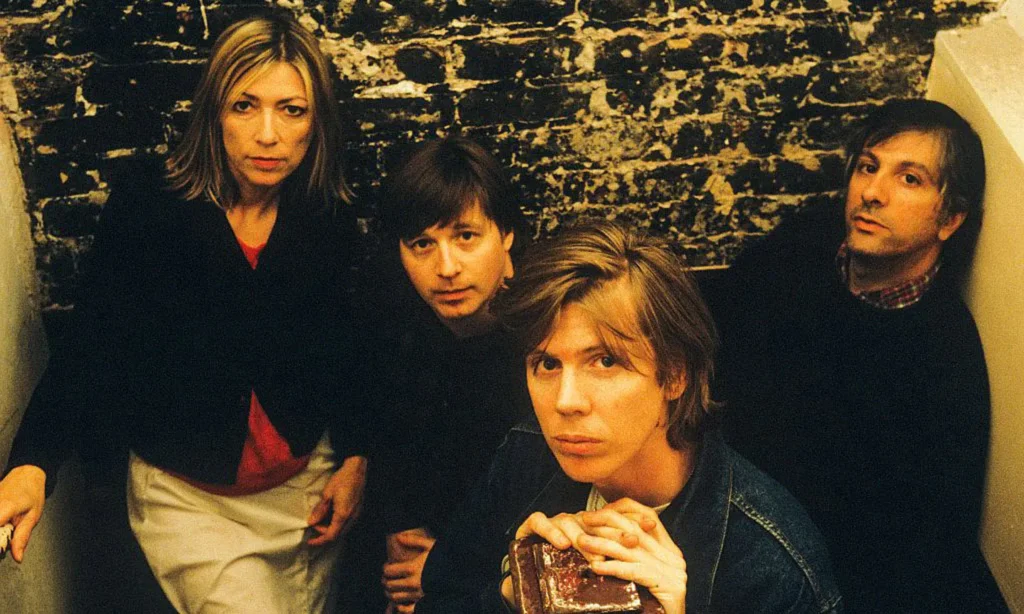
Influence on Other Artists
Sonic Youth’s innovative approach to music and their fearless experimentation have had a profound impact on countless artists across various genres. By pushing the boundaries of what rock music could be, they paved the way for a generation of experimental and alternative musicians. Bands like Nirvana, Pavement, and My Bloody Valentine have cited Sonic Youth as a significant influence, drawing inspiration from their use of noise, dissonance, and unconventional song structures.
Nirvana’s Kurt Cobain, in particular, was heavily influenced by Sonic Youth. Their friendship and collaborative tours helped bring Nirvana into the spotlight, and Cobain adopted many of Sonic Youth’s experimental techniques, such as alternate tunings and the integration of feedback. This influence is evident in the raw, unpolished sound of Nirvana’s groundbreaking album Nevermind, which helped to popularize the grunge movement and brought alternative rock into the mainstream.
Moreover, Sonic Youth’s willingness to defy commercial pressures and maintain artistic integrity has inspired numerous indie and underground artists to prioritize creative freedom over market success. Their establishment of the SYR label, which released experimental music and supported emerging artists, further cemented their role as pioneers and mentors in the alternative music scene. Bands like Yo La Tengo, Deerhoof, and Blonde Redhead have all drawn from Sonic Youth’s ethos, continuing to explore and expand the possibilities of rock music.
Cultural Impact
Beyond their influence on individual artists, Sonic Youth’s broader cultural significance lies in their ability to bridge the worlds of music and art. They challenged the conventional boundaries between these disciplines, collaborating with visual artists, filmmakers, and other creatives to create a multidisciplinary body of work. Their integration of avant-garde art movements like Fluxus and Dada into their music and visual presentation introduced these concepts to a wider audience, fostering a greater appreciation for experimental art forms.
Sonic Youth’s role in the rise of alternative culture in the late 20th century cannot be overstated. By consistently challenging the status quo, they contributed to a broader cultural shift that embraced diversity, nonconformity, and artistic experimentation. Their influence extended beyond music to fashion, visual art, and even literature, helping to shape the aesthetic and ideological landscape of the 1990s and beyond.
Their collaboration with renowned artists such as Raymond Pettibon and Mike Kelley brought a punk rock sensibility to the art world, while their music videos, directed by avant-garde filmmakers like Richard Kern, pushed the boundaries of the medium. These collaborations highlighted the interconnectedness of various artistic disciplines and demonstrated the potential for innovative, cross-disciplinary work.
Continued Relevance
Sonic Youth’s critique of consumerism and their emphasis on artistic authenticity remain strikingly relevant in today’s society. In an era marked by the pervasive influence of digital media and the commodification of nearly every aspect of life, their message of resistance to commercial pressures resonates more than ever. Their music, with its emphasis on noise, dissonance, and nonconformity, continues to inspire new generations of artists who seek to challenge the status quo and explore the fringes of artistic expression.
The band’s legacy is evident in the continued vitality of the indie and alternative music scenes, where their influence can be heard in the work of contemporary artists like St. Vincent, The Yeah Yeah Yeahs, and Radiohead. These artists, much like Sonic Youth, prioritize creative exploration and are unafraid to incorporate unconventional elements into their music, challenging listeners to expand their perceptions of what music can be.
Furthermore, Sonic Youth’s commitment to social and political causes, such as environmentalism, anti-globalization, and reproductive rights, has inspired a generation of artists to use their platforms for activism. Their involvement in benefit concerts and advocacy reflects a broader trend in which artists engage with social issues and contribute to positive change.
